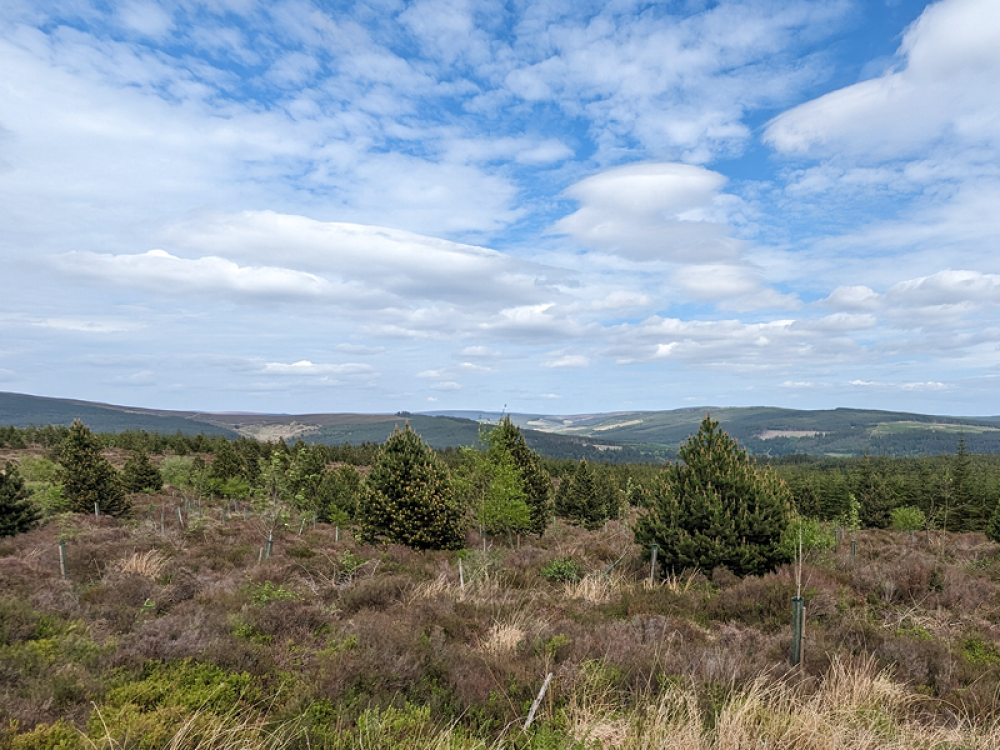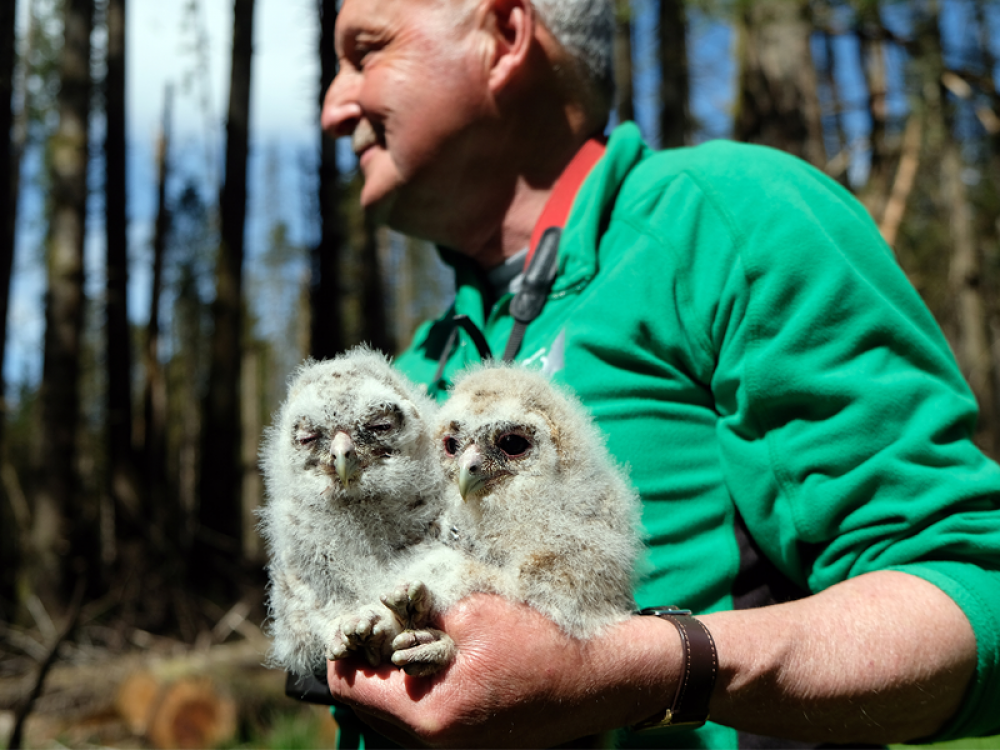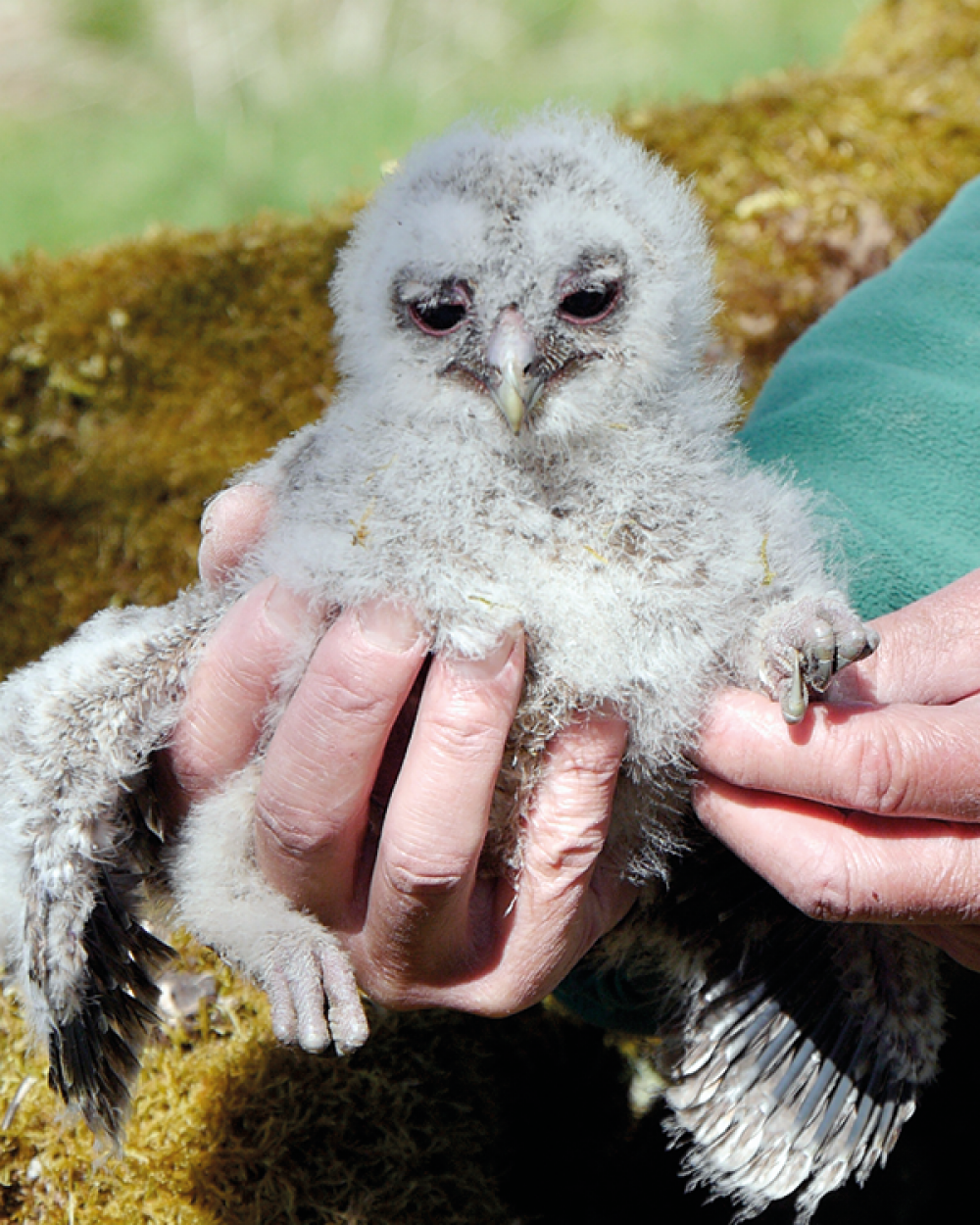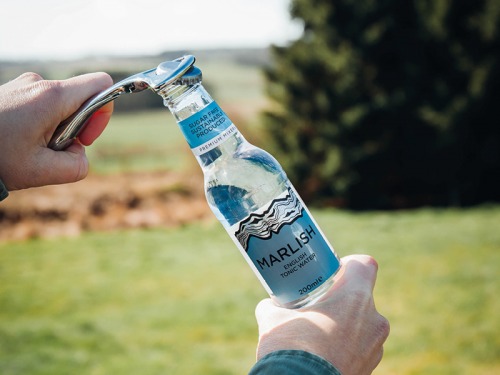Meet The Tawny Owl Chicks Born In Kielder Forest

Wise owls have chosen the perfect moment to raise more chicks in Kielder Forest, home to the longest owl study in Britain
Starting as a simple hobby to allow him to spend time with his father, Martin Davison’s interest in birds eventually evolved into a full-time job. ‘I’ve been going to help out in survey areas since I was 10 so my interest started very young. When I was a little lad I would go out with my dad and bird watch, we’re talking in the late 60s. We’d find birds and nests, then monitor them. Gradually we got more and more interested and set up study areas for blue tits, grey tits and pied flycatchers.
‘That developed into looking at a sparrow hawk population which we monitored for years and then, by the time I was a teenager and could drive, I started working up at Kielder. It was mostly weekends to begin with and then gradually things changed. Conservation was more at the forefront of people’s minds by the 1980s and I’ve worked there ever since.’
Forestry England manages and cares for the nation’s 1,500 woods and forests, and as England’s largest land manager, they shape landscapes and enhance forests for everyone to enjoy, wildlife to flourish and businesses to grow. One of these forests is our own Kielder, where Martin is based. ‘I’m the ornithologist for Forestry England, and my job is to monitor and survey the raptors and owls here,’ he tells us. ‘One of my jobs is to look at and check the owl boxes but I focus on a whole spectrum of birds of prey, ranging from sparrow hawk, goshawks and buzzards to merlins and peregrines out on the open moor. We’ve got pairs of ospreys at Kielder now so I monitor them too.’
Read More: How this Historic Mill in Skipton is Helping to Re-establish a Rare Breed of Yorkshire Bees

The spectacular 63,000 hectare forest in Northumberland is the centre of the UK’s longest running tawny owl project, which has now been going for nearly 45 years. Over that time Forestry England has installed 240 boxes in the trees to provide ready-made owl homes and allow experts to keep close tabs on the owls’ welfare. Martin helps to monitor these boxes throughout the forest, with the help of students from Aberdeen University, and this year an increase in vole numbers – their most important prey – has sparked a mini baby boom of owlets.
‘It’s a natural habitat for tawny owls,’ says Martin. ‘They’re a bird of the woodland and Kielder, being the largest forest in England, is obviously going to have a large population of tawny owls. However, chick numbers are linked to the vole population which undergoes a natural cycle of boom and bust. When they are abundant, owls have more chicks. When they are scarce, many skip breeding. We’ve been working with Aberdeen University to chart this cycle so we anticipated a good year was coming.’ About 90 tawny pairs have had chicks, compared with just 25 in the study area last year, and the number of offspring could soar to about 180.
While this year has seen a boom in tawny owls, the study shows that over the long term the population is stable – something Martin says is a great sign as well. ‘This study has been a great way of monitoring the health of the forest,’ he explains. ‘By monitoring the population of tawny owls we can find out if, as a forestry industry, we’re doing our job correctly. Are we giving the owls a very good or very poor habitat? Are we adjusting the habitat and impacting on them? If the tawny owls are increasing or stable that’s a great sign, if they’re decreasing we’d be worried.
Read More: See the Hoodies Inspired by Yorkshire Air Ambulance's Life-Saving Work
‘For us it moves up and down with the food supply, but our population is pretty stable which is good. The underlying number of pairs attempting to breed over a given period is stable showing longterm exactly what we want. The important bit is that a lot of studies are short (three to five years) and that’s great for a snapshot. But for instance with tawny owls you would only get one vole cycle within that period. Monitoring them over 40 years like we have, you get a number of vole cycles so you get a much better feel for what’s going on within the environment.
‘Long term studies like this are research gold-dust,’ Martin adds. ‘It’s shown that upland forests can support a thriving and stable tawny population when sensitively managed. It’s a tribute to the long-term skill and dedication of our foresters and ecologists. The project has also confirmed that tawnies are home birds, sometimes venturing as little as a quarter of a mile from their place of birth during their entire life.’

A big part of the study is providing tawny owls with a nest and, as Martin says, this is roughly where they’ll stay for life so it’s important to get it right. ‘The basic thing we do is provide them with their home; the nest box,’ he says. ‘If you put a nest box up in a coniferous woodland 98 percent of your birds will use it because there are so few natural holes in commercial woodlands. It’s not like an oak woodland where every fifth tree might have a hole of some kind in it. Obviously spruce trees grow straight up, with very few holes at all.
‘So before we started using the nest boxes in such big numbers, the birds would nest in all sorts of weird places. They’d nest in crags, they’d nest in old buildings like a barn owl might, they’d nest at the foot of a tree, they’d nest down a rabbit hole or even on top of an old squirrels’ drey. Absolutely anywhere because there was nothing else for them to nest in. By providing them with these boxes we’re giving them a very safe and secure place to nest; the nest’s not going to fall out of the tree, the tree’s not going to blow over, and it’s certainly not going to be felled. They don’t care whether it’s a box or a hole, they just recognise it as an easy place to nest in. It’s a great way to monitor them.
‘Tawny owls are also highly territorial and once they find a territory they live in it for the rest of their lives,’ continues Martin. ‘They generally don’t move far, only as far as they need to, so most of our birds at Kielder only move about 10 km or less. One famous bird we had moved one kilometre in its whole life and it lived to 19 years old! Some of the territories are no bigger than a square kilometre as well, so the owls can be highly sedentary.’
Read More: The Six Best Places to Stargaze Across the North East and Yorkshire
Thousands of chicks have been ringed as part of the study, revealing amongst other things that some have gone on to live for more than 20 years. Not only are chicks ringed with a unique identifier, but they are also weighed and have one of their wings measured. ‘Young tawnies are very docile and it’s a painless experience for them. Looking like little bundles of fluff they always bring a smile to my face,’ laughs Martin. ‘Through the day the adults are also very docile, and when we catch the females they often go to sleep in your hand. It’s not unusual because although we’re doing it at 10am, for them it’s like three o’clock in the morning as they’re nocturnal.
‘Catching the adults has been a very important part of our study too because that means we get to know how healthy they are, if they’re increasing in weight and how long they’re living. We always catch them when they’re nesting on their chicks, so we just pop them back into the nest boxes onto the chicks afterwards. Generally, in good vole years like this year, the females are heavier than they will be in a poor year. For example we’ve had birds over 600 grams this year whereas the average on a normal year is 500–550 grams. A few females are actually getting up to 100grams heavier this year than they were last year, purely because there’s more food coming in.’
Read More: Meet Alexandra Potter Who Wrote The Book That Inspired Disney+'s Not Dead Yet

The study at Kielder Forest is set to continue, but Martin’s work also helps with other studies. ‘Over the years we’ve had various Phd studies involved in the tawny owl study,’ he tells us. ‘It’s a lovely baseline study to look at other things from. For instance a few years ago we looked at tawny owl predation by goshawks and how the goshawks affected the population.
‘At the moment we’ve got a study looking at tawny owls and pine martens and how the pine martens are affecting the tawny owl population. As pine martens have now turned up in the forest and are slowly increasing in numbers, is that going to have a detrimental effect on the tawny owls or will it not make a difference? At the minute we just don’t know. The study won’t answer all our questions but it might send us on an avenue to look at in the future. So we use it as a baseline and get the Phd students to come in and do more specific work.’
It’s difficult to allow members of the public to visit and see this work, but there are still ways to show your support and get involved.
Read More: We Climbed Newcastle Cathedral's Lantern Tower - Here's What You Can Expect from the Tour
‘It’s not really an easy thing to get involved in,’ explains Martin. ’It’s very difficult to show people the owls and the terrain at Kielder is not friendly to the general public. We’ve also got more than 200 nest boxes so as you can imagine that covers a large area of the forest, so it’s not practical for people to help us in that way.
‘What they can help with is by looking at conservation as a whole. Not just at Kielder but elsewhere in the country. If you’re interested in birds, join your bird club or a wildlife trust. Get involved, not specifically with owls but with wildlife generally – that’s always great. It’s a good starting point. You can then develop your interest into a bird club, wildlife trust or natural history society. There are lots of avenues you can go down if you’re interested.
‘Visit us as well. There’s nothing to stop you coming to have a walk and watching the wildlife at Kielder. That’s very much encouraged in fact. We’ve got some lovely paths people can use, and you might even see a tawny owl. The best time to see a tawny owl here is late evening, and at this time of year most people are in bed when the tawny owls are coming out. A great time to hear them is probably in the middle of August when they’re starting to boot the chicks out. It can get quite noisy and there’s quite a lot of hooting going on then.’
• Tawny owls are the most common owl in the UK, with a body length of 38cm and a wingspan of 95–105cm.
• They are a UK amber list species, meaning its conservation status is of moderate concern.
• Males and females bond for life.
• Between two and four eggs are laid in March or early April, and 28 days is the recognised incubation period.
• At night they make a familiar hooting cry. ‘Twit’ is the male and ‘twoo’ is the female. They have a variety of other calls, which the males and females use to communicate with each other.







